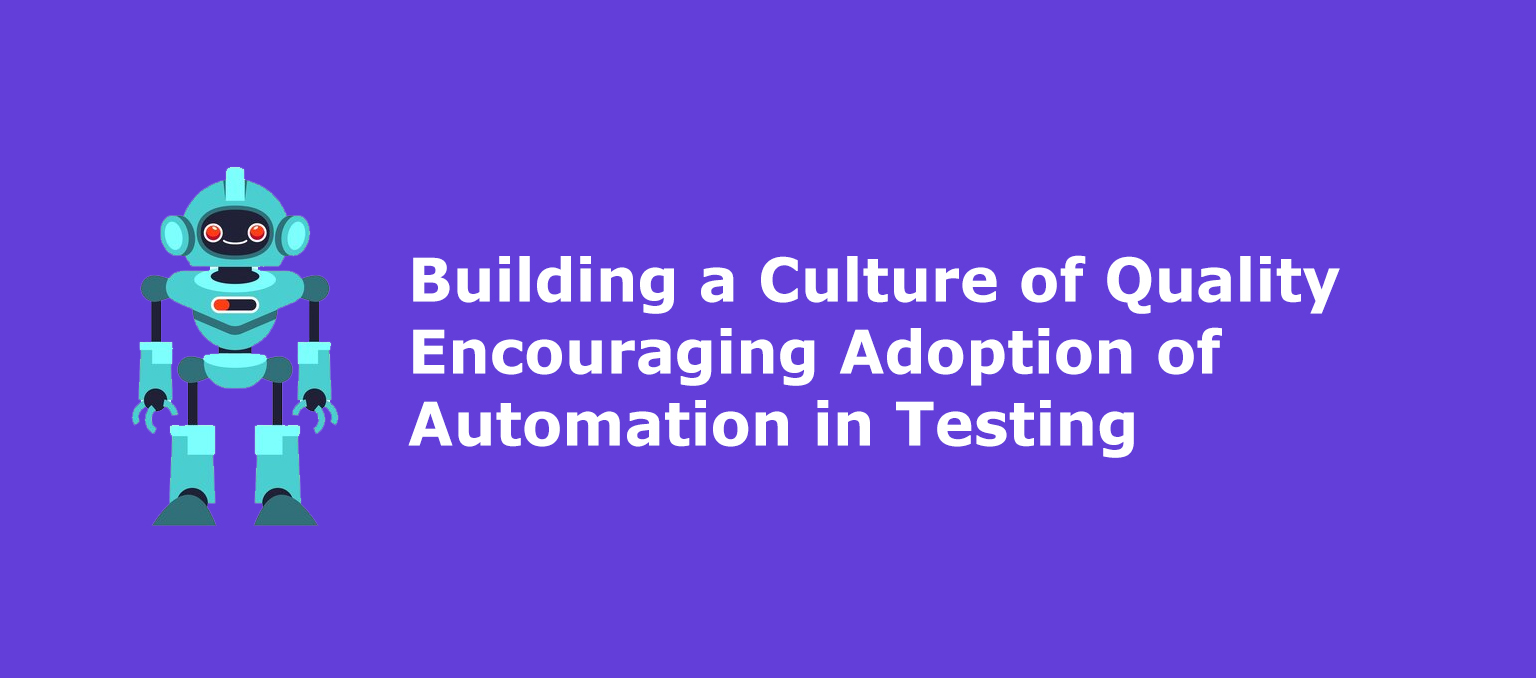In today's rapidly evolving technological landscape, the pursuit of quality in software development has become more crucial than ever. With users expecting seamless experiences and businesses striving for competitive edges, the pressure to deliver high-quality software continuously mounts. In response, organizations are increasingly turning to automation in testing as a cornerstone of their quality assurance strategies. However, the successful adoption of automation in testing requires more than just implementing the latest tools; it necessitates building a culture of quality within the organization. This article explores the key steps and strategies involved in fostering such a culture and encouraging the widespread adoption of testing and automation services.

Understanding the Importance of Quality Culture
Before delving into the specifics of automation in testing, it's essential to grasp the significance of cultivating a culture of quality within an organization. A quality culture transcends mere adherence to processes or tools; it encompasses a mindset, values, and behaviors that prioritize excellence and continuous improvement in all aspects of software development. Such a culture fosters collaboration, innovation, and accountability, driving teams to deliver superior products that meet or exceed user expectations.
Overcoming Resistance to Change
One of the primary challenges in promoting automation in testing is overcoming resistance to change. Many stakeholders may be apprehensive about adopting new methodologies or tools, fearing disruptions to established workflows or job security. To address this resistance, it's crucial to communicate the benefits of automation clearly and transparently. Highlight how automation can streamline testing processes, reduce time-to-market, enhance product quality, and ultimately contribute to the organization's success. Additionally, involve stakeholders early in the decision-making process, solicit their feedback, and address their concerns proactively.
Investing in Education and Training
Effective adoption of automation in testing requires equipping teams with the necessary skills and knowledge. Investing in education and training programs not only enhances technical proficiency but also cultivates a shared understanding of quality objectives and best practices. Offer workshops, seminars, and online courses covering topics such as test automation frameworks, scripting languages, and industry standards. Encourage cross-functional collaboration by facilitating knowledge sharing among developers, testers, and other stakeholders. By empowering teams with the right expertise, you lay the foundation for successful automation initiatives.
Fostering Collaboration and Cross-Functional Teams
Building a culture of quality entails breaking down silos and fostering collaboration across different teams and departments. In the context of automation in testing, this means establishing cross-functional teams comprising developers, testers, quality assurance specialists, and other relevant stakeholders. Encourage these teams to work closely together throughout the software development lifecycle, from requirement analysis to deployment and beyond. By involving stakeholders from diverse backgrounds early in the process, you can identify potential issues sooner, iterate more effectively, and ensure that the final product meets quality standards.
Promoting Continuous Improvement
Continuous improvement lies at the heart of a quality culture. Encourage teams to regularly evaluate their testing processes, identify areas for optimization, and experiment with new approaches and technologies. Implement feedback mechanisms, such as retrospectives and post-mortems, to gather insights from each testing cycle and drive iterative improvements. Embrace a mindset of learning from failures rather than assigning blame, and celebrate successes as opportunities for further advancement. By fostering a culture of continuous improvement, you create an environment where automation in testing evolves organically to meet changing needs and challenges.
Recognizing and Rewarding Excellence
Acknowledging and rewarding excellence is essential for sustaining a culture of quality over the long term. Recognize individuals and teams who demonstrate outstanding contributions to automation in testing, whether through innovative solutions, exceptional performance, or collaborative efforts. Celebrate achievements publicly, whether through awards, newsletters, or company-wide meetings, to reinforce desired behaviors and inspire others to follow suit. Additionally, consider incorporating quality metrics into performance evaluations and incentive programs to align individual goals with organizational objectives. By incentivizing excellence, you cultivate a culture where automated testing becomes ingrained in the fabric of the organization.
Conclusion
Building a culture of quality is a multifaceted endeavor that requires commitment, leadership, and continuous effort. Encouraging adoption of automation in testing is just one aspect of this broader initiative, but it's a critical one in today's software-driven world. By understanding the importance of quality culture, overcoming resistance to change, investing in education and training, fostering collaboration, promoting continuous improvement, and recognizing excellence, organizations can create an environment where automation in testing thrives. Ultimately, by embracing automation as a means to achieve quality, organizations can deliver superior software products that delight users and drive business success.

No comments yet